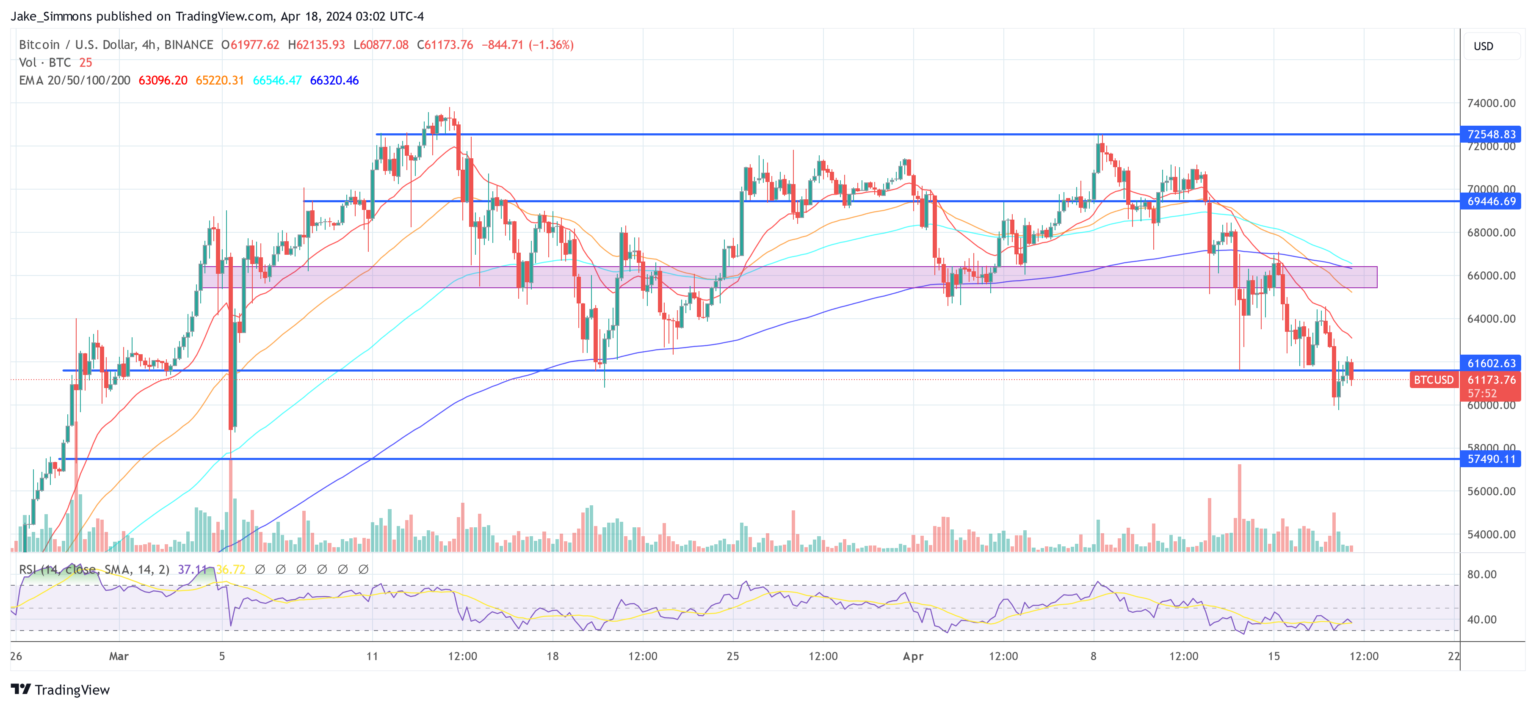Because the US financial system grapples with rising inflation expectations and scaled-back forecasts for Federal Reserve fee cuts, the Bitcoin market stays buoyant, in accordance with an in depth evaluation by Reflexivity Analysis. With the US CPI headline inflation projected to speed up to 4.8% by the November 2024 elections, in accordance with Financial institution of America, situations are seemingly unfavorable for a loosening of financial coverage. Regardless of this, the cryptocurrency sector, significantly Bitcoin, seems insulated and optimistic.
Bitcoin Unfazed By Delayed Fee Cuts?
The bond market now anticipates solely three Federal Reserve fee cuts this 12 months, a major discount from the sooner forecast of six. The CME FedWatch software signifies that almost all of market members don’t anticipate a fee reduce to happen earlier than the mid-September FOMC assembly. This adjustment displays a recalibration of expectations concerning the Fed’s capability to handle persistent inflation pressures.
Amidst these macroeconomic shifts, Ritik Goyal, in a visitor post for Reflexivity Analysis, presents a compelling evaluation in his report titled “The Fed is Unable to Trigger a Recession. Danger Property are But to Notice This.”
The report argues that, opposite to traditional knowledge, the Federal Reserve’s fee hikes have had unintended stimulative results on the financial system. Goyal elucidates three particular mechanisms by which this phenomenon operates:
1. Elevated Authorities Curiosity Funds: “Fee hikes raised curiosity funds by the federal government to the non-public sector,” Goyal notes. Because the Fed raises charges, it will increase the curiosity burden on the federal government, which has borrowed extensively through the post-COVID interval. With the federal debt-to-GDP ratio exceeding 120%, the doubled curiosity funds now successfully act as a stimulus, channeling roughly $1 trillion yearly to the non-public sector
2. Direct Subsidy to Banking System: The Fed’s coverage changes have additionally led to a redistribution of wealth throughout the monetary system. “Fee hikes raised the Fed’s direct subsidy to the banking system,” states Goyal. This has occurred because the yield curve inversion resulted within the Fed incurring losses on its stability sheet, losses that straight profit the banking sector, translating to an estimated $150 billion annual subsidy.
3. Induced Housing Development Growth: The speed hikes have paradoxically stimulated the housing market. “Fee hikes induced a housing building growth,” in accordance with Goyal. As greater charges discourage current householders from promoting, the one viable choice to satisfy housing demand is new building, a sector with one of many highest GDP multipliers.
Goyal’s insights underline a vital misalignment within the Fed’s present method towards the backdrop of considerable fiscal interventions for the reason that pandemic. “The standard financial coverage framework is breaking down beneath the load of fiscal dominance,” Goyal concludes, suggesting an setting that might favor non-traditional property like Bitcoin.
Echoing Goyal’s findings, crypto knowledgeable Will Clemente highlighted the broader implications for cryptocurrencies on X (previously Twitter), stating, “With debt/GDP as excessive as it’s, we’re in a backwards world the place excessive charges imply curiosity funds on debt are stimmy checks for those who purchase property—~$1T might be paid out in 2024. Large image could be very constructive for the web cash.”
At press time, BTC traded at $61,173.
Featured picture from Shutterstock, chart from TradingView.com
Disclaimer: The article is supplied for academic functions solely. It doesn’t symbolize the opinions of NewsBTC on whether or not to purchase, promote or maintain any investments and naturally investing carries dangers. You’re suggested to conduct your individual analysis earlier than making any funding choices. Use info supplied on this web site fully at your individual threat.

